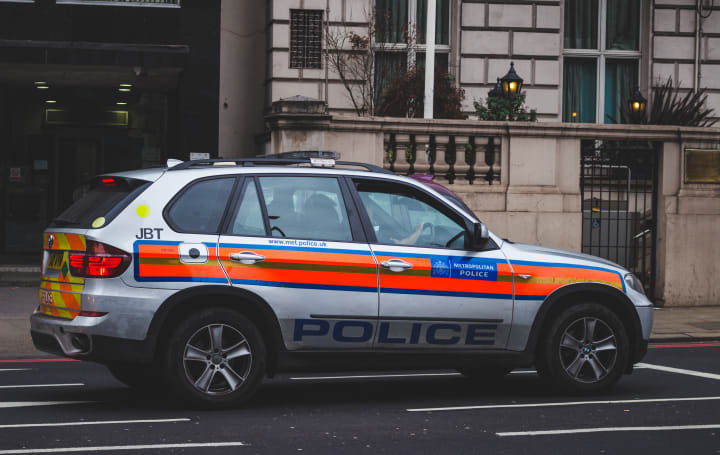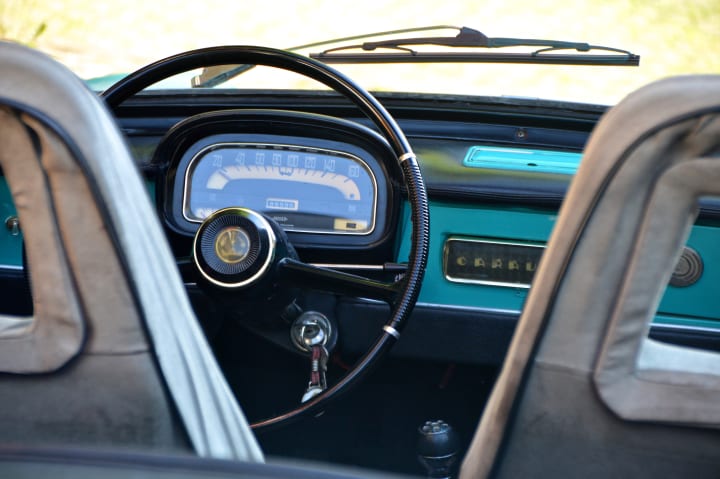Things You Didn't Know About Police Cars
What you didn't know about police cars may change your entire perception of classic movies, reality TV shows, and that story about your estranged family member forever.

What are the top careers that kids want to go into when they grow up? Well, you have your astronauts, veterinarians, firefighters...and, of course, police officers. TV shows, cartoons, books, and even documentaries can't give you all the interesting details about police departments, cops, and the vehicles they drive in though. The things you didn't know about police cars may break your past self's heart, but it will give the little kid inside of you a better understanding of the most important piece of equipment law officers are equipped with.
SUVs have overtaken sedans.

Photo from Pixabay via Pexels
When thinking of cop cars, most people (in the United States, at least) first picture the classic black-and-white sedan, the most common of which is the Ford Crown Victoria. Seemingly in keeping with the rest of the country's changing car preferences though, SUV models have actually overtaken the previously standard sedan in terms of popularity. Though SUVs generally have a worse MPG to contend with, they require more than 30 percent less fuel than the Crown Victoria when idling—and since police vehicles spend far more time idling than driving, this engine improvement gives the SUV a very competitive edge that benefits both law enforcement and taxpayers. Though you'll find both sedans and SUVs on highway patrol and inner city work, the scales do appear to be tipping in favor of the SUV.
Pursuit vehicles remain the same.
The Ford Crown Victoria, and more recently the Ford Taurus, are a couple of the most historically common police pursuit vehicles, or PPVs, in the United States. However, especially since the discontinuation of the Crown Vic, Dodge Chargers have also risen among the number of high-powered sedans in the police force because of their reputation as one of the best police cars from around the world. Of course, police departments make a point of diversifying their fleet in order to protect themselves against the effects of a major recall on their primary vehicle.
Sirens are neither standard, nor consistent.

Photo from Pixabay via Pexels
The light bars and siren wails on cop cars differ drastically from country to country, year to year, and even state to state. Something most people didn't know about police cars is that they—and other emergency vehicles—don't just have one button to turn on the lights and siren. When traveling where there is no traffic, police officers will generally only use their lights, and forego turning on the loud siren until they need the car ahead to move aside.
Additionally, these sirens are constantly changing. Recent developments have made attempts to minimize the piercing volume of many sirens, in exchange for additional vibration, which will alert cars ahead to the approaching siren without hurting anyone's eardrums.
Police cars originated in Akron, Ohio.
Something you surely didn't know about police cars is that they actually originated in Ohio, of all places, and not even in a big city either—the very first police vehicle was an electric wagon built in 1899 and first used in Akron, Ohio. These police "wagons," in their early incarnations, were not cop cars as we know them; they were more akin to a police version of the firetruck, a vehicle that could cart all or most of the department around at once. An additional fun fact: The first assignment of this vehicle was to make its 16mph way to pick up a disorderly drunk. Little did the Ohio police force know where this modest invention would lead a century down the road.
That origin was a change to keep up with the times.

Photo from Pixabay via Pexels
Whether the place of origin was something you did or didn't know about police cars, you may still wonder about the why and how. Did police cars come into development ahead of commercial cars, to get an edge on the good old horse-drawn buggy? Or was the commercial car an advancement that forced police to keep up?
Well, short answer: the latter. Police cars were not the first cars invented, by a long shot. They were, however, developed once electric cars began rising in order to keep up with the criminal element. Chalk that up on the list of things you didn't know about electric cars.
They're a lot more than just cars.
Police cars require a lot more electricity than your run-of-the-mill car. Every aspect of a cop car has to be boosted and amped: the radio capabilities, engine function for high speed use, sirens and lights, long periods of idling. When the police service takes on a car—like a Ford Taurus, Crown Vic, or Dodge Charger for example—it takes a lot of work and energy to get it ready for use. It also takes a lot of energy to keep it ready for that use. Brakes, steering, suspension, cooling... every aspect of a cop car has to be updated and maintained to the highest standards of performance. This is why many cop cars have car features that may be standard in the future for other, less fortunate automobiles.
K-9 police vehicles are very different from the standard.

Photo by Adam Kontor from Pexels
Police cars are already far more involved than regular commuter cars, but even your standard cop car is nothing compared to the specifications and requirements for K-9 units. The four-legged members of the police force require thousands of dollars worth of safety equipment to keep them safe in the event of an accident, and the cars must also be equipped to run A/C while idling or off, without killing the battery, so that the police can leave the dog in the car when they aren't needed. So, if you do see a dog in a K-9 police car (they're usually marked), don't worry about him—the A/C is on and he's probably listening to his favorite song.
Their eyes are everywhere.
Police work is dangerous. A routine traffic stop can quickly turn deadly, and sudden events and changes can happen in a split second, leaving little time for communication. This is part of the reason that cop cars are equipped with such extensive surveillance equipment. Many police cars can actually run regular video and time-stamped photo surveillance 24/7. Cops themselves can't keep their eyes swiveling around at all times, so it's important for their vehicles to be equipped to keep an eye on things while they're looking down, communicating, writing tickets, etc.
They can run without keys in the ignition.

Photo from Pixabay via Pexels
Something you probably didn't know about police cars is that they don't actually have to have the keys in the ignition to run or idle. This does two important things: First, it allows the police to leave the car running while they step out, which means that they are able to leave the radio and surveillance on without running down the battery. Secondly, this "runlock" feature that enables the car to run without the keys in the ignition also prevents anyone from stealing the car—if someone attempts to drive it while it's running without the keys, it will immediately lock up, adding an extra layer of security.
They are, unfortunately, not usually bulletproof.
A common myth surrounding cop cars is that the doors are bulletproof. You see this in media all the time—police forces using car doors as shields, and being completely protected from bullets. The truth is, it would be far too expensive to equip every car in the police force with bulletproof material. Another thing you probably didn't know about police cars is just how often they're involved in shootouts—it is in fact very, very rare that a bulletproof door would benefit a police officer in the United States, and so the prohibitive costs keep the doors pretty much run-of-the-mill for now.
About the Creator
Nicola P. Young
Lover of Books, Saxophone, Blogs, and Dogs. Not necessarily in that order. Book blogger at heartofinkandpaper.com.






Comments
There are no comments for this story
Be the first to respond and start the conversation.